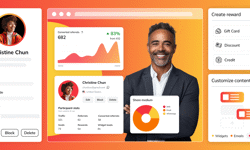The word ‘programmatic’ sparks a wide range of responses from publishers.
At one extreme are those who regard it as the Devil’s tool – devaluing advertising, driving down cost-per-thousands; dehumanising ad sales, making ad sales teams redundant; and handing over control of the sales process to the buyers rather than the sellers in an uncontrollable high speed auction.
At the other extreme are those who see it as the future of advertising – offering the hyper-segmenting of audiences, making advertising much more trackable and measurable, while releasing human sales teams to have the time to add real value in premium deals rather than getting bogged down in basic, repetitive tasks.
Many more publishers sit in the middle - confused by the terminology, the overlapping technical platforms and marketplaces and the speed of change, hoping that it will all go away and that life will return to something more stable and simple.
The single undeniable fact is that automation in advertising is growing. The Internet Advertising Bureau’s (IAB) latest census of the industry shows UK online display advertising worth just under £1bn per year and with programmatic’s share of that surging from 28% to 45% in a year. By contrast, direct sales (where a salesperson deals directly with a buyer) has slipped to 49%. The remaining 6% were bought through ad networks, their share down significantly from 22%.
Two key areas are accelerating these shifts: programmatic now accounts for 64% of mobile ad sales (up from 37% the year before) and for 18% of video ads. The growth of mobile programmatic is not a surprise, but the increase in video programmatic is more significant as it shows that automation techniques can be used effectively in a premium, brand-building context and not just in the clearance auction environment of RTB (Real Time Bidding). If RTB had its genesis in clearing out the unwanted tail of publishers’ remnant inventory at rock bottom prices, the rise of programmatic video shows that automated advertising is shaking off its bargain basement image.
Where we’re getting it wrong
In this fast moving environment, even the leading publishers are missing lots of tricks. A new report from Boston Consulting Group (BCG) digs deeply into the operation of 25 major publishers around the world and suggests that few of them are getting programmatic right. Things are going wrong in four areas: staffing, technology, trading models and data.
* Staffing. New technical skills are still needed in publishing – data scientists and software engineers are prime examples. Also, smarter organisational structures and remuneration schemes (the new skills do not come cheaply) are required to execute and drive efficient sales strategies. At the moment, most organisations are a hotch-potch of criss-crossing reporting lines and bonus packages that do not encourage a holistic approach to the selling of advertising across multiple platforms.
* Technology. Publishers need to have a clear IT strategy and stick to it. That could mean choosing one supplier to execute all aspects of automation or having a range of suppliers to perform specific tasks. Whichever route is taken, it should be the result of a clear plan rather than directionless panic.
* Trading models. There are a variety of ways to sell inventory: open auctions, private marketplaces with selected buyers or agreeing guaranteed prices upfront using direct relationships. Each one has pros and cons and is appropriate to different situations, but the more direct and private models tend to give publishers more control and to result in much higher cost-per-thousands.
* Data. This is the whole raison d’être of programmatic, matching the right advertising message to the right customer in real time using live data. Yet sometimes the glitz of real time processes conceals the fact that the underlying data which is enabling these nano-second connections can be a bit dodgy. First party data (publishers’ own information built on their own transactional contacts) is much more detailed and robust than data collected by third parties, the most common (and suspect) being from cookies. Recent research from WhiteOps suggests that around 20% of programmatically bought ad impressions are generated by bots rather than by real, human interaction. That ‘robotic fraud’ figure rises to a staggering 50% when looking at total publisher website traffic.
Tackling misconceptions
Trying to define ‘programmatic’ also raises some big issues…
* Programmatic is not just about space on open websites. It should also include the walled gardens of publishers’ own apps, emails, and enewsletters – valuable collateral beyond the reach of browsers, and so outside the environment in which cookies operate. With 51% of all web content and 86% of mobile content being viewed via apps rather than through browsers (Source: Flurry), cookie-based networks are looking increasingly limited.
* Programmatic is not just about digital inventory. Time Inc in the USA looks to be having real success in incorporating its print display products into a programmatic sales environment by adding print subscribers into their database. Time has noticed that a significant proportion of programmatic print deals have been driven by digital native media buyers who had never considered print as a serious channel before. Going programmatic has made print more sexy.
* Programmatic is not just about static creative. It can be used to deliver dynamic, automated content, adapted in real time for individual consumers and served across multiple platforms. A funky example of this is Tate’s digital display in Hammersmith, where art from the gallery’s archive is changed according to live data that includes time of day, traffic flow, weather, phases of the moon and Heathrow flight arrival times.
* The biggest issue is that programmatic is actually not just about advertising. Once a publisher has created a data pool of its own customers and prospects in order to sell advertising, it also has the platform to drive a range of other marketing activities – delivering tailored content to individuals, controlling marketing communications with customers, acquisition and retention activity and so on. The programmatic platform creates a truly dynamic, real-time ‘single customer view’ – one that is driven not just by historical transactions, but by live interactions and behaviours. Programmatic is just a subset of full marketing automation; and advertising is just a subset of a full audience relationship.
Yet lurking behind all these exciting opportunities are two major wrinkles (and let’s just park the ticking time-bomb of ad blocking which is an issue in its own right!)…
Firstly, for all the pizzazz of the automated front-end, the metrics for gauging the back-end effectiveness of all this high-speed, high-tech trading are still pretty primitive. Magazine publishers in particular are struggling to come up with a practical measure of engagement quality which goes beyond the volume picture of views, clicks, impressions, opens or time spent viewing. This is probably the industry’s biggest challenge in trying to defend its share of ad spend and drive up CPMs. Yet publishers can only influence the metric debate if they take more control over how their inventory is bought and sold.
Secondly, the organisation and structures within publishing companies are now becoming major barriers. As a practical example, the suppliers of automation software have a real problem in knowing who to talk to in a publishing company about their services. Is it an advertising executive? Or marketing? Or audience / circulation? Or IT? Or someone with ‘digital’ in their job title (whatever it is they do)? Or everyone at the same time – a distressingly common scenario. Or do they just cut to the chase and go straight to the CEO? As an interesting side comment, a new job title is emerging in a number of FMCG companies, that of the chief marketing technology officer: someone who can bring together marketing expertise and technical know-how in a single role.
So, what does all this mean? In the current whirlpool of overlapping networks, platforms, marketplaces and business models, publishers are in danger of losing control of their supply chain. Yet there is also a real opportunity to take some control back through publishers creating their own private marketplaces, driven by their own first party data. That may mean more multi-publisher coops along the way (such as Pangaea and the AOP’s publisher collective) in order to create sufficient scale.
Ultimately, it all comes back to executing the boring, technical stuff well: something that digital start-ups are so good at and which legacy publishers are so bad at. Amazon realised long ago that whoever owns the payment transaction owns the consumer. For programmatic, whoever owns the data owns the ad deal. It is publishers who should have the best data about their customers across all platforms. Yet they need to act with some urgency to consolidate and package that data better. Delivering quality contacts to advertisers, driving up CPMs and taking back more control of the trading process: these are all the benefits of a more coherent strategy.
At the end of the day, data is all about the audience. It all comes back to audience. If publishers deliver audience properly, they will thrive in the programmatic world; if not, they are dead meat.












